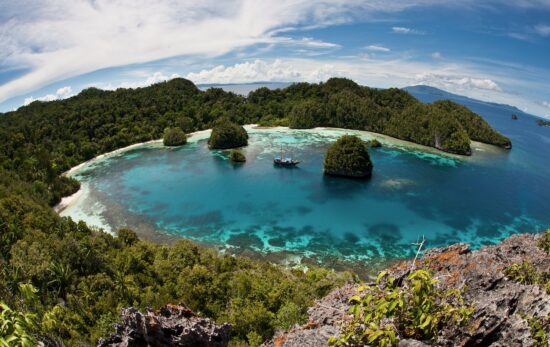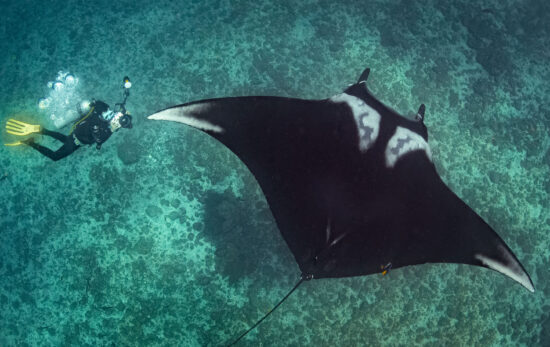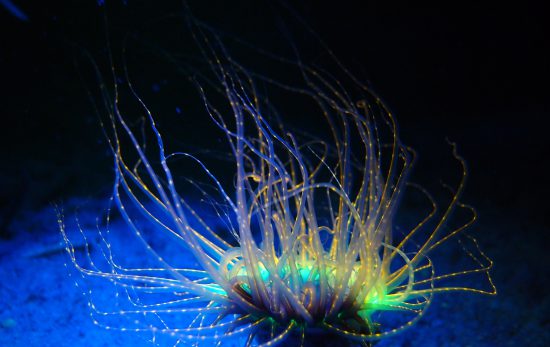As a new scuba diver, the world of liveaboard destinations can be intimidating. But, it doesn’t need to be. Some of the best liveaboard routes are open to freshly certified Open Water Divers. Picking the right destination will ensure you’re always comfortable in the water, and a good choice of boat can provide a reassuring atmosphere. Not to mention, you’ll probably make diving friends for life during a trip to one of the best liveaboard destinations for beginners.
From Belize to the Philippines, these destinations are perfect for your first liveaboard experience. With so many great options, we don’t know how you’ll choose only one!
Belize
Located in the heart of the Caribbean, Belize boasts spectacular waters for diving, including the second biggest barrier reef in the world. Interactions with turtles, rays and reef sharks are common at Lighthouse Reef, Half Moon Caye and Turneffe Reef. Whale sharks can occasionally be seen. In addition, these destinations are easily accessed by liveaboard from Belize City, and almost all of the dive sites are easy enough for beginners (with the exception of the Blue Hole). However, it should be noted that most liveaboards request divers have at least 20 dives under their weight belts.
- Recommended Boat: Belize Aggressor III
- Best Itinerary for Beginners: Belize Lighthouse Reef, Half Moon Caye and Turneffe Reef (10 Nights)
- Departure Port: Belize City
- Typical Liveaboard Length: 7 to 10 Nights
- Featured Creatures: Turtles, Stingrays and Reef Sharks
- When to Go: March to December
Cayman Islands
Three major islands, Grand Cayman, Cayman Brac and Little Cayman, sit like emerald gems in sapphire seas. Diving here is superb with sites like the Babylon Pinnacle or the drop-off called the Wilderness Wall. Furthermore, the wrecks of the Captain Keith Tibbets and the Kittiwake host all manner of tropical marine species. Stingray City, too, is famous for its encounters with stingrays in shallow waters. Liveaboards in the area have no minimum dive requirements, because most sites are shallow with clear waters and no current.
- Recommended Boat: Cayman Aggressor IV
- Best Itinerary for Beginners: Best of the Cayman Islands (7 Nights)
- Departure Port: George Town
- Typical Liveaboard Length: 7 to 10 Nights
- Featured Creatures: Stingrays and Tropical Fish
- When to Go: June to November
Bahamas
With over 700 islands, the Bahamas features dive sites for every level of diver, including beginners. The third largest barrier reef is found offshore, and there are deep walls, wrecks, blue holes and some of the best shark diving in the world. In fact, you’ll find dive sites for nearly guaranteed interactions with tiger, lemon and hammerhead sharks at sites like Tiger Beach. So, get your cameras ready! Liveaboards are the best way to get the most out of your diving vacation in the Bahamas, and many boats have no minimum dive requirements due to the shallow, calm nature of most sites.
- Recommended Boat: Bahamas Aggressor
- Best Itinerary for Beginners: Exuma Cays and Southwest Eleuthera
- Departure Port: Elizabeth on Bay Marina – Yoga Dock
- Typical Liveaboard Length: 6 to 10 Nights
- Featured Creatures: Hammerheads, Tiger Sharks, Bull Sharks and Dolphins
- When to Go: October to June
Thailand
While scuba diving is a popular pastime throughout coastal Thailand, the best sites in the Land of Smiles are found in a remote section of the Andaman Sea. Liveaboards ply the waters off Phuket and Khao Lak, hitting up the Similan Islands, Richilieu Rock, Koh Tachai and Koh Bon en route. Only accessible by liveaboard (or lengthly day trip), you’ll find some of the best dive sites for whale shark and manta ray encounters in Thailand in these waters. The reef life is also prolific as these islands have been protected as a marine park since 1982. Most areas in the Andaman Sea have protected areas suitable to beginners, but Richelieu Rock should only be attempted by divers with a bit more experience.
- Recommended Boat: The Junk
- Best Itinerary for Beginners: Similan and Surin Islands (4 Nights)
- Departure Port: Khao Lak
- Typical Liveaboard Length: 3 to 9 Nights
- Featured Creatures: Whale Sharks and Manta Rays
- When to Go: November to May
Maldives
A favorite among liveaboard divers, the Maldives is a tropical scuba diving destination with lots of big marine life. In particular, whale sharks and manta rays are seen with regularity, and sometimes hammerhead sharks make their way to the country’s many pinnacles and channels. While Maldivian liveaboards plying the northern and southern atolls require advanced certifications, the central atolls are great for beginners. These waters don’t have the heavy currents found elsewhere, and most of the marine life can be found within a few meters of the surface. Some ships even offer the Open Water Diver course onboard as an optional addition to the itinerary.
- Recommended Boat: Scubaspa Ying
- Best Itinerary for Beginners: Best of Maldives (7 Nights)
- Departure Port: Male
- Typical Liveaboard Length: 7 Nights
- Featured Creatures: Manta Rays and Whale Sharks
- When to Go: December to April
Australia
A popular destination for tourists wishing to combine their Open Water Diver course with a liveaboard trip to one of the most famous destinations on Earth, the Great Barrier Reef spans 132,974 square miles (344,400 square kilometers). In this part of Australia, you might see mantas and several species of sharks, including silky sharks, grey reef sharks, whale sharks and even tiger sharks. Coral gardens, bommies, pinnacles and channels make up the majority of dive sites. Night diving, too, is possible. While you may be able to sample the inner reefs on a day trip from Queensland, the outer reefs can only be seen by liveaboard and offer better biodiversity, healthier corals and fewer divers.
- Recommended Boat: Spoilsport
- Best Itinerary for Beginners: Fly Dive Coral Sea (4 Nights)
- Departure Port: Cairns
- Typical Liveaboard Length: 2 to 7 Nights
- Featured Creatures: Manta Rays and Sharks
- When to Go: June to November
Egypt
One of the most popular liveaboard destinations in the world, Egypt and the Red Sea have no shortage of epic dive sites. The good news for beginners is that most of the northern sites aren’t too deep, and there’s little current in protected areas. Liveaboards visit healthy coral reefs and some wrecks, including the SS Thistlegorm, which is considered not only one of the best wrecks in the world, but also one of the best dive sites in the world. You might even see a few sharks, if you’re lucky! Plus, Egypt’s liveaboards tend to be cheaper than others around the world, making this a great budget liveaboard destination. The two major ports of departure for northern routes are Hurghada and Sharm El Sheikh. Because there is a healthy mix of diving in Egypt, be sure to check the certification and logged dives requirement on your chosen itinerary.
- Recommended Boat: MY Blue Melody
- Best Itinerary for Beginners: Straits of Tiran and North (7 Nights)
- Departure Port: Hurghada or Sharm El Sheikh
- Typical Liveaboard Length: 6 to 10 Nights
- Featured Creatures: Sharks and Tropical Fish
- When to Go: March to May and September to November
Turks & Caicos
Featuring a fantastic barrier reef and dramatic drop-offs, Turks and Caicos consists of 40 islands southeast of the Bahamas. In many areas, you’ll drift dive past coral-lined walls that fall to infinity. Pelagic species, like hammerheads and eagle rays, may join you from time to time. In other places, you’ll find beds of soft corals that are part of a 14-mile (23-kilometer) barrier reef. The majority of these dive sites are protected from heavy current and boast crystal clear water. Because much of the country is uninhabited, liveaboards are an excellent choice for discovering this scuba wonderland.
- Recommended Boat: Turks and Caicos Explorer II
- Best Itinerary for Beginners: Best of Turks and Caicos (7 Nights)
- Departure Port: Providenciales
- Typical Liveaboard Length: 7 Nights
- Featured Creatures: Hammerheads and Eagle Rays
- When to Go: November to May
Philippines
The 7,107 islands of the Philippines are diving paradise. This area is home to 1200 species of marine life. While many of these are macro species, the Philippines is also known as a pelagic destination and a haven for shark lovers. Thresher sharks, manta rays and whale sharks can be found. Furthermore, most of the diving areas of the Philippines (with the exception of Tubbataha, Coron and Malapascua) are accessible to beginners. And liveaboards in the area tend to be uniquely luxurious. Look for itineraries traveling to Apo Reef, Anilao or the Visayas.
- Recommended Boat: Infiniti
- Best Itinerary for Beginners: Apo, Bohol and Islands (6 Nights)
- Departure Port: Coron, Cebu or Puerto Galera
- Typical Liveaboard Length: 4 to 10 Nights
- Featured Creatures: Sharks, Tropical Fish, Macro Critters
- When to Go: November to April
FAQs
Have questions about the best liveaboards for beginners? We’ve got answers!
Where Can I Book Liveaboards for Beginners?
When booking your liveaboard, getting all the necessary, and desired, information upfront is important. Chat with one of PADI Travel’s Scuba Travel Experts to make your booking and pre-departure as smooth as possible. They will help you choose the best liveaboard for your needs and answer any questions you may have. Or, book your liveaboard directly online, viewing all the key information, including the itineraries available, on each PADI Travel liveaboard page.
How Do I Know When To Visit Each Destination?
Typically, liveaboards are scheduled at the best times of year to visit the liveaboard destinations. However, with liveaboard fleets that run all year round, you’ll want to know what you’re likely to encounter based on the season of year. Get information on possible sightings, the best seasons to visit, and the weather by exploring our dive guides here.
Should I Get My Advanced Open Water Diver Certification First?
As an Open Water Diver, certain dive sites may be off-limits during your dive safari (unless you’re on one of the best liveaboards for beginners). Additionally, depending on the conditions, the crew may suggest that beginners sit out certain dives if currents are particularly strong or visibility is low. If you’d prefer to ensure you’ll be experienced enough for all the dive sites on your next liveaboard, get started with your Advanced Open Water Diver course first. You can finish it onboard your liveaboard of choice or at your local dive center prior to your trip.
Where Will You Venture To?
If you’re a diver just beginning your underwater adventure, get in contact with our PADI Travel team. We’d be more than happy to provide you with information on any of the above destinations.




